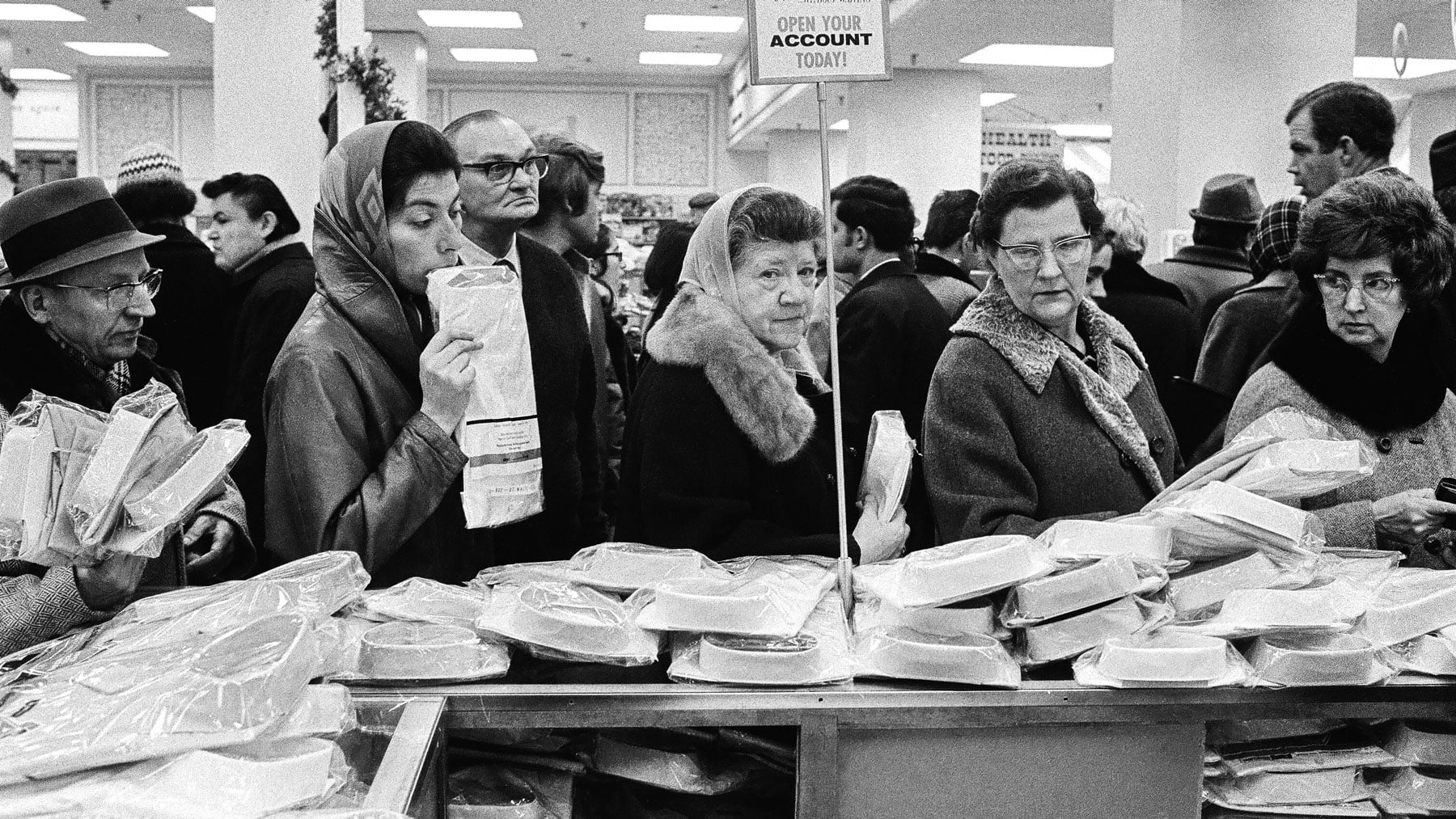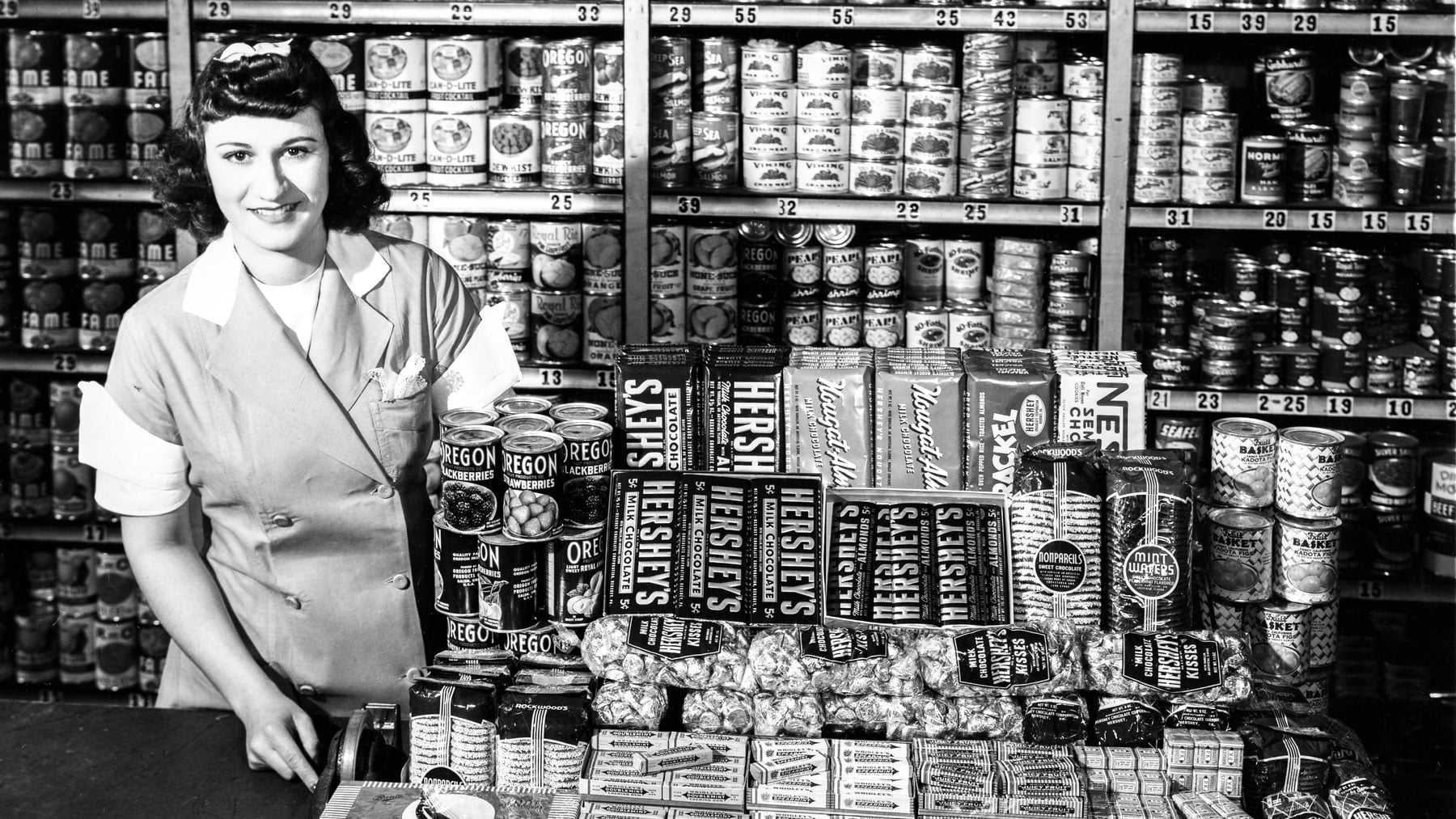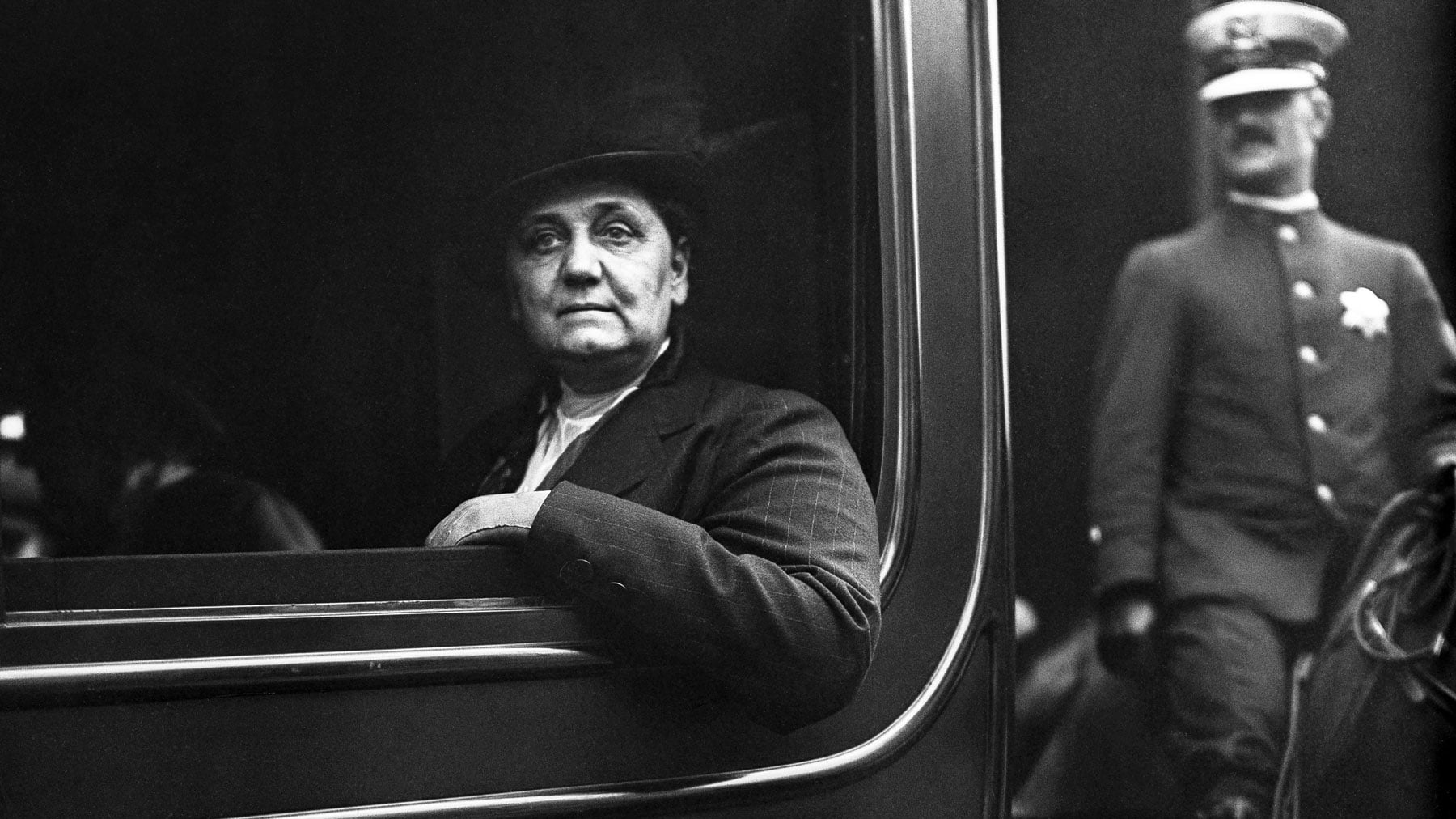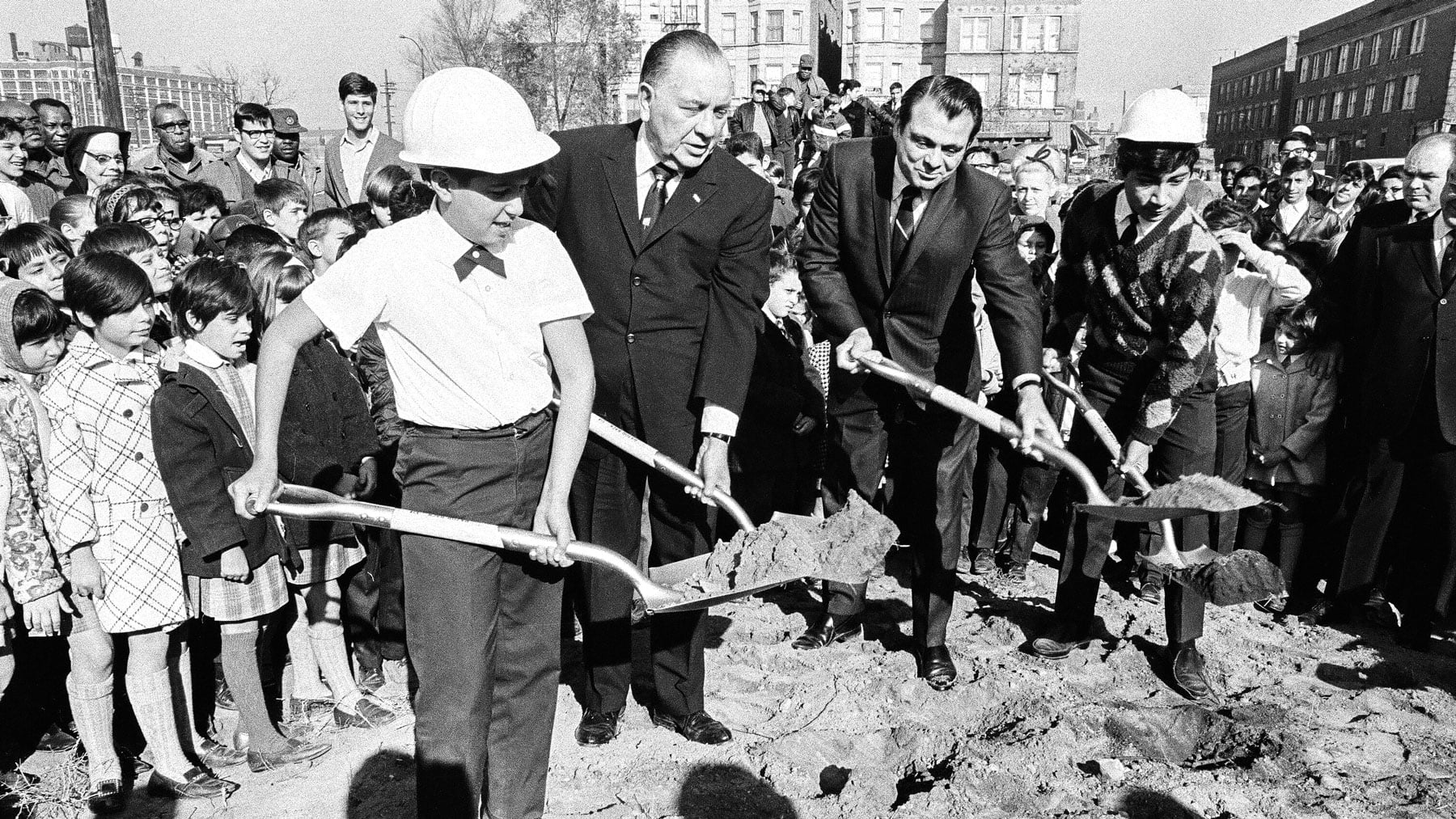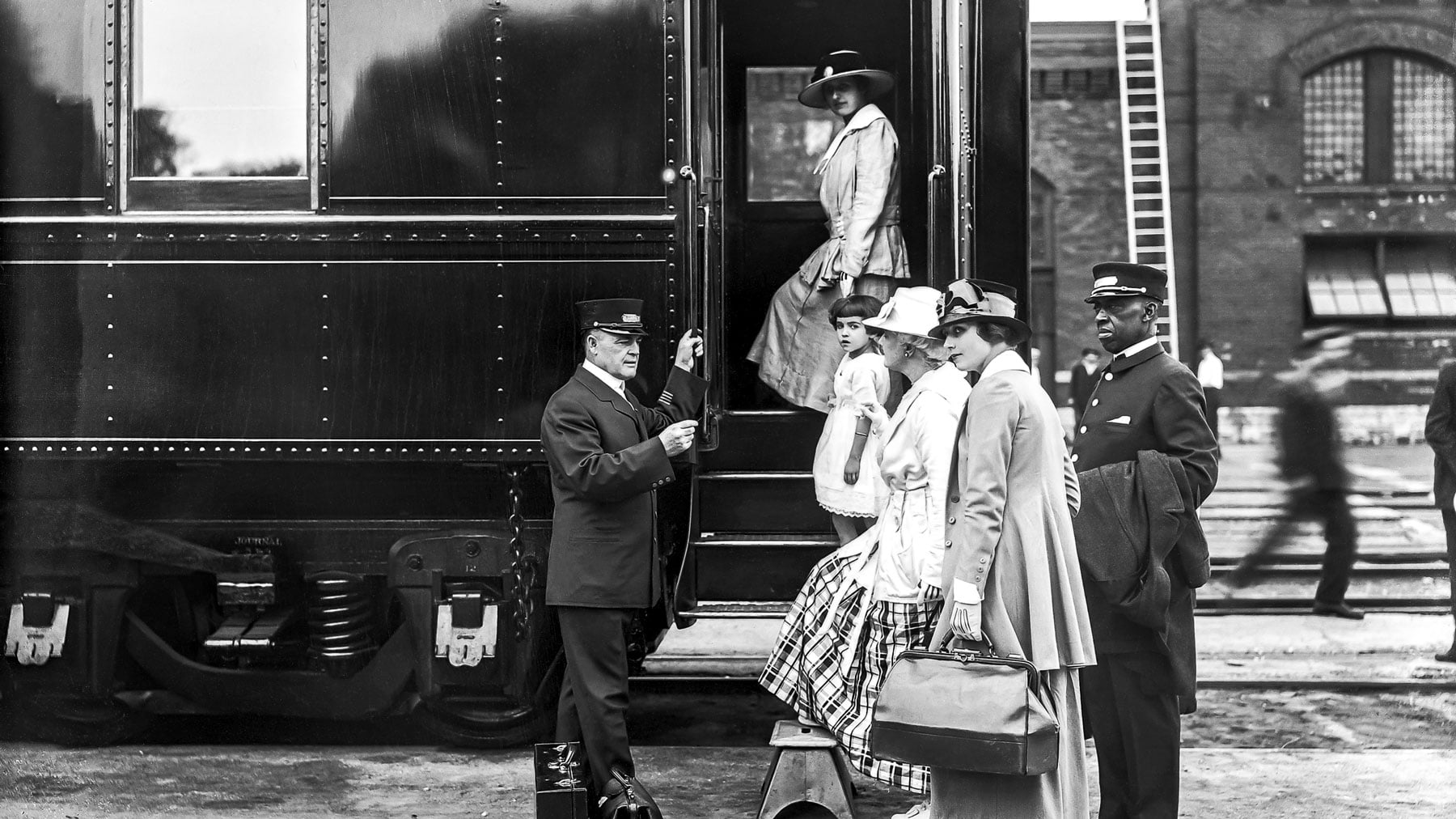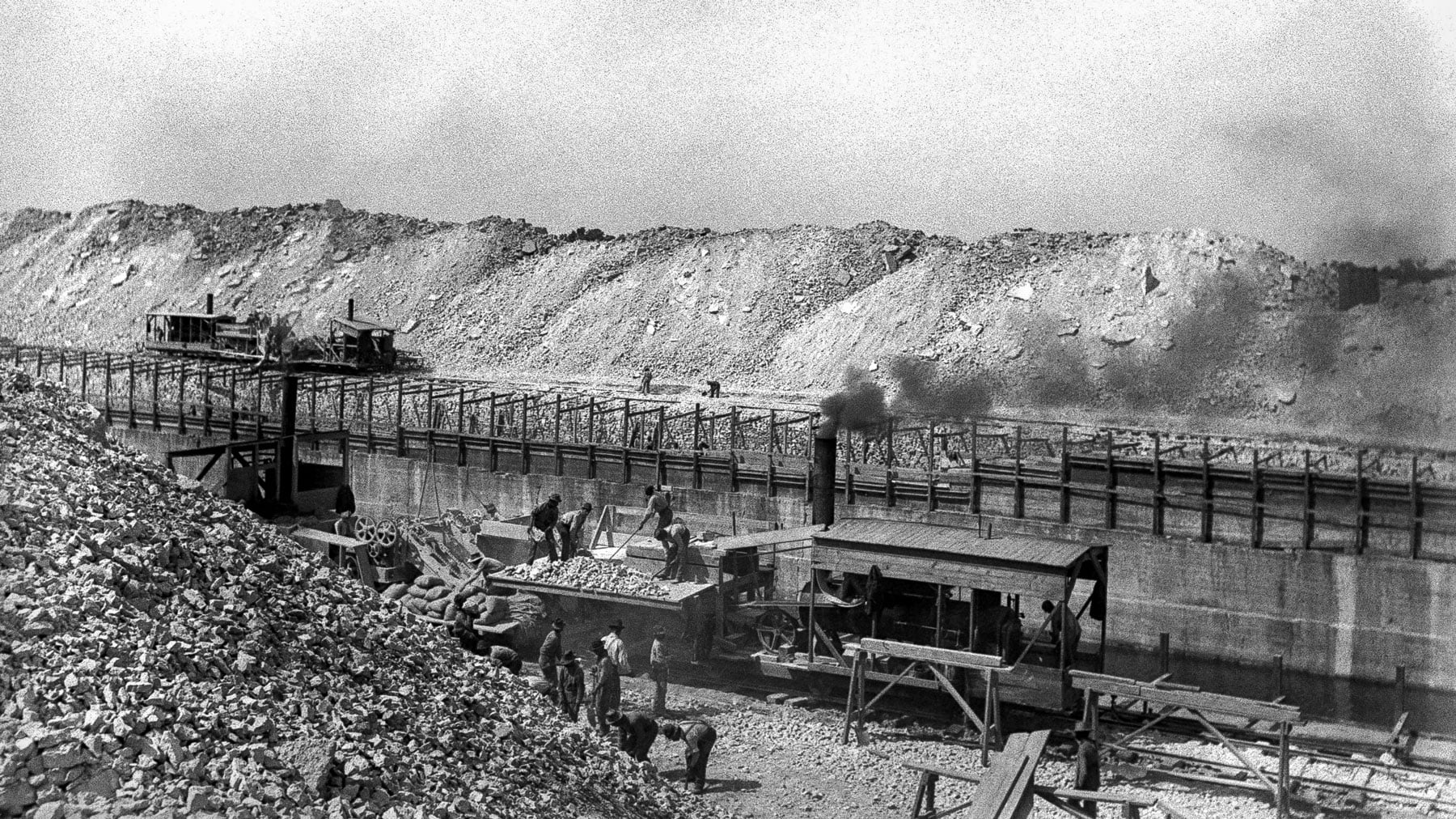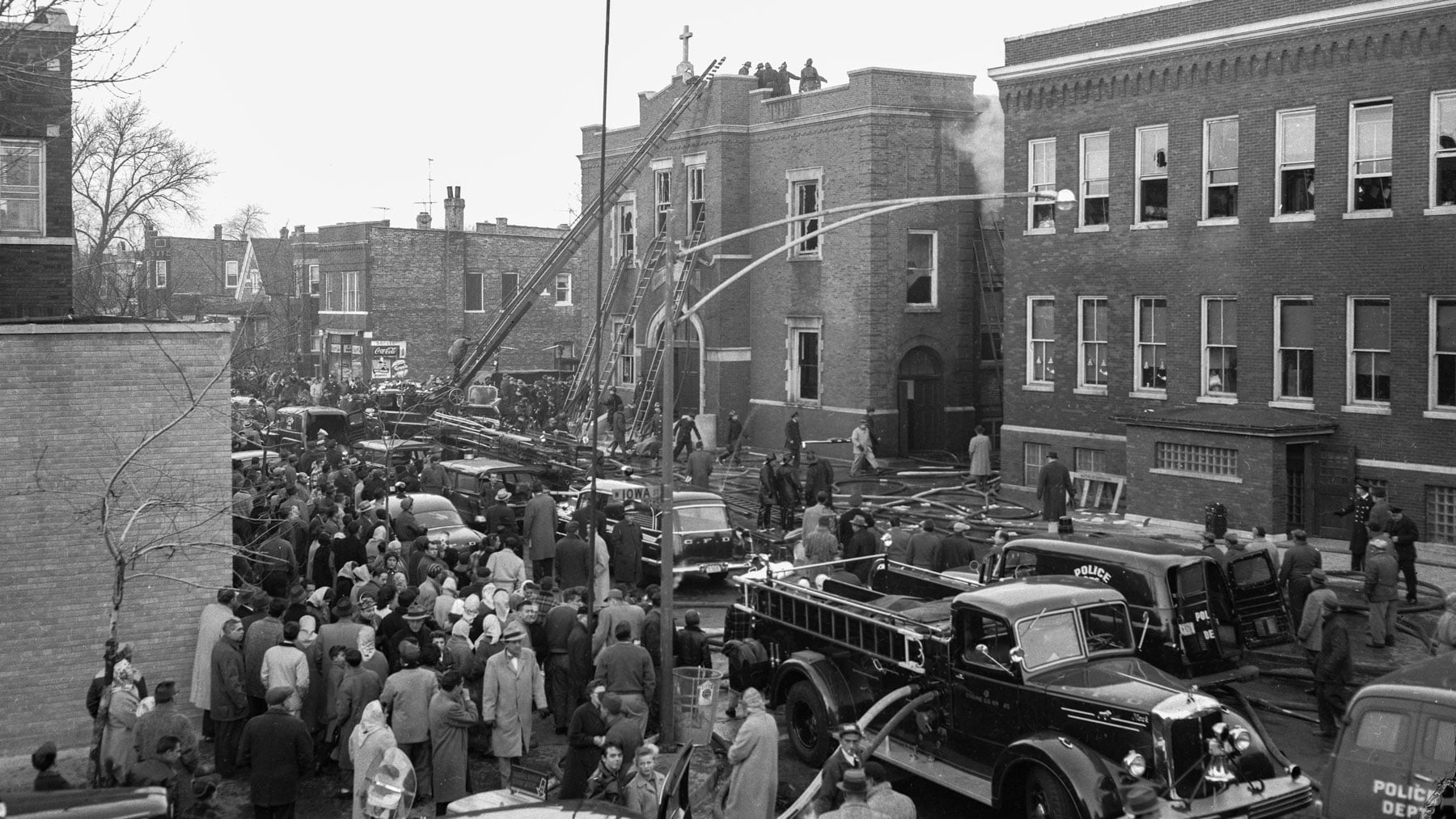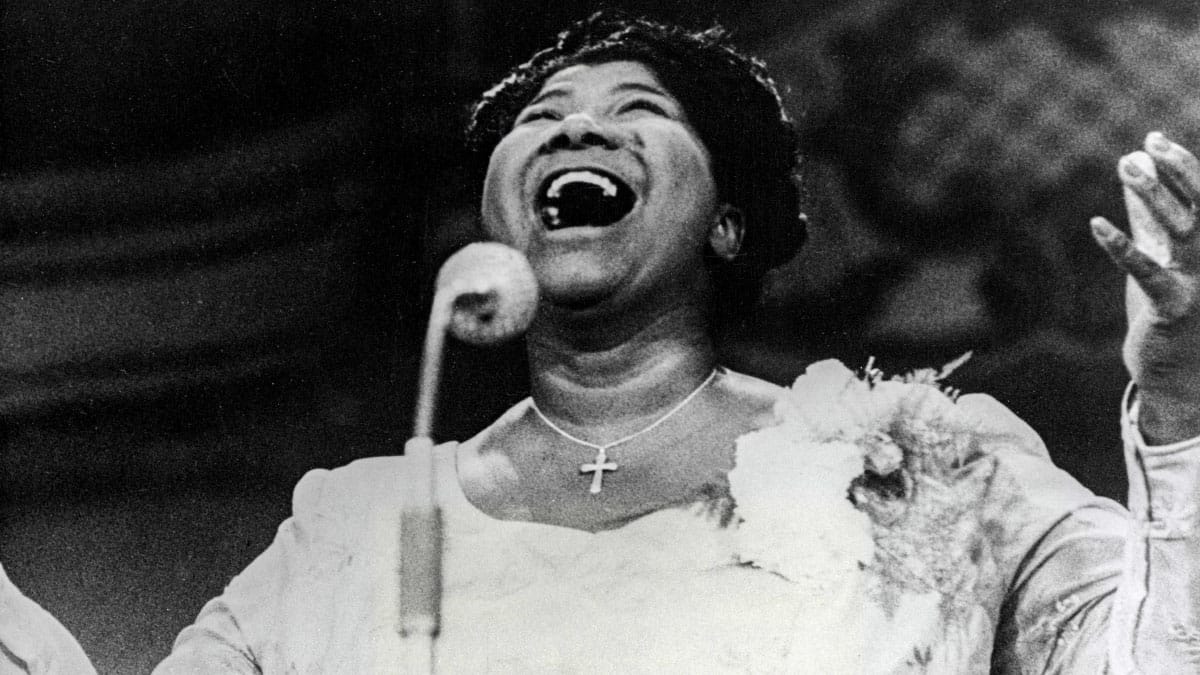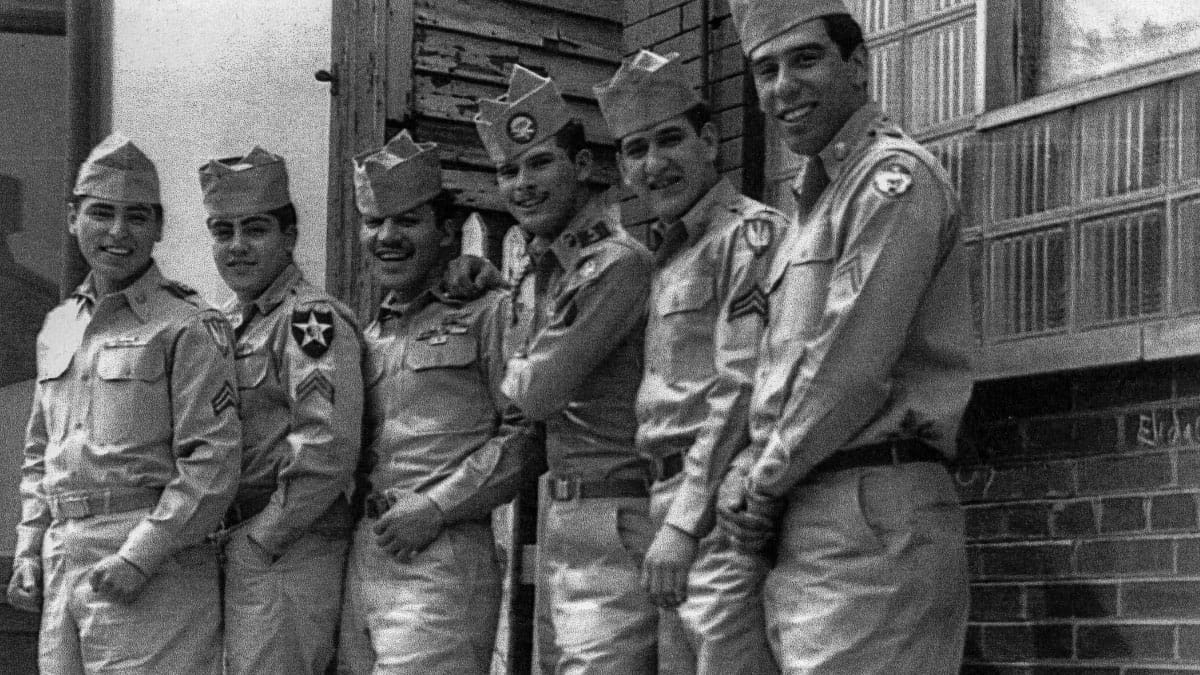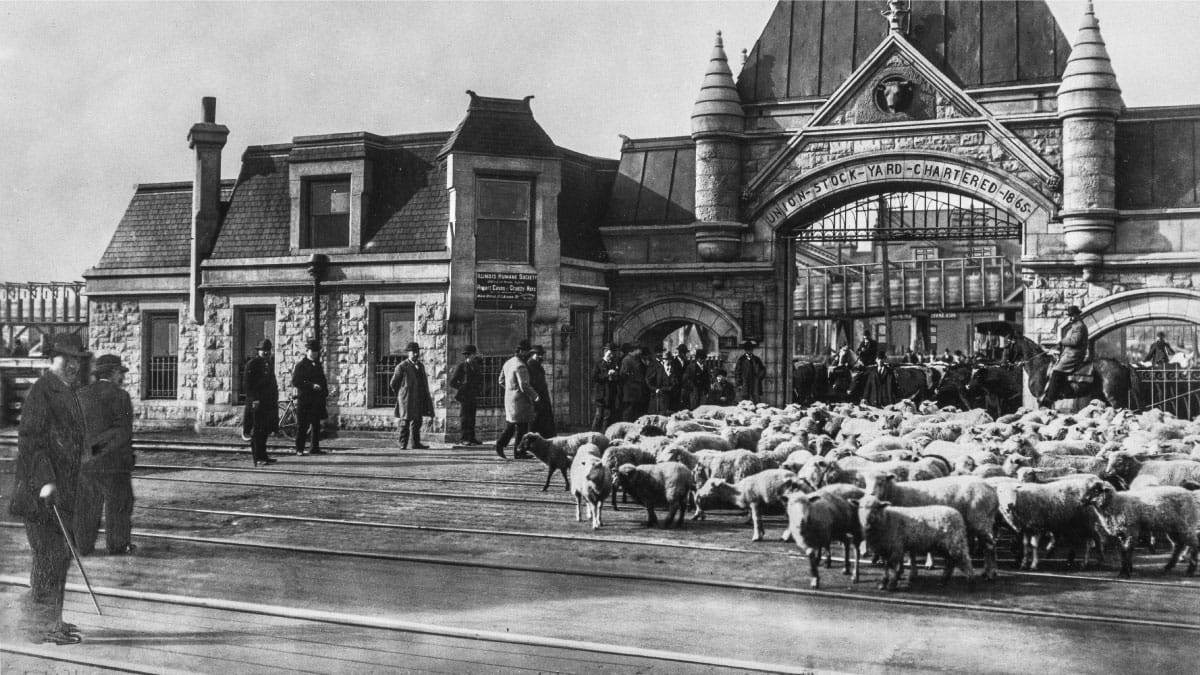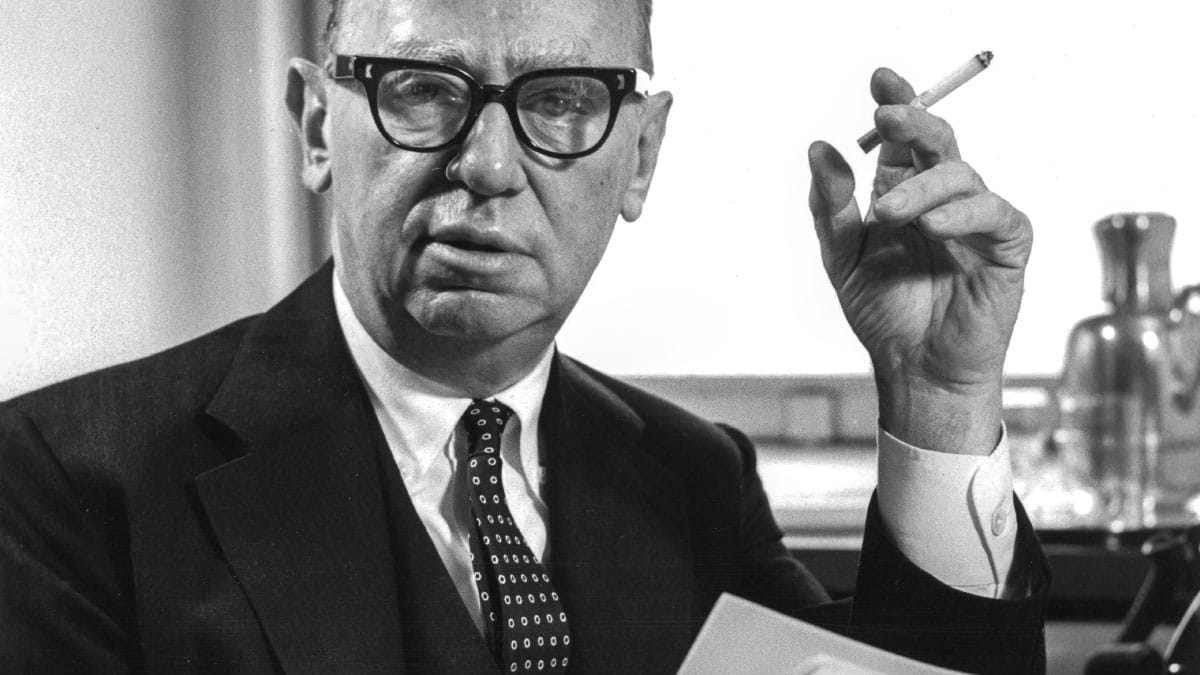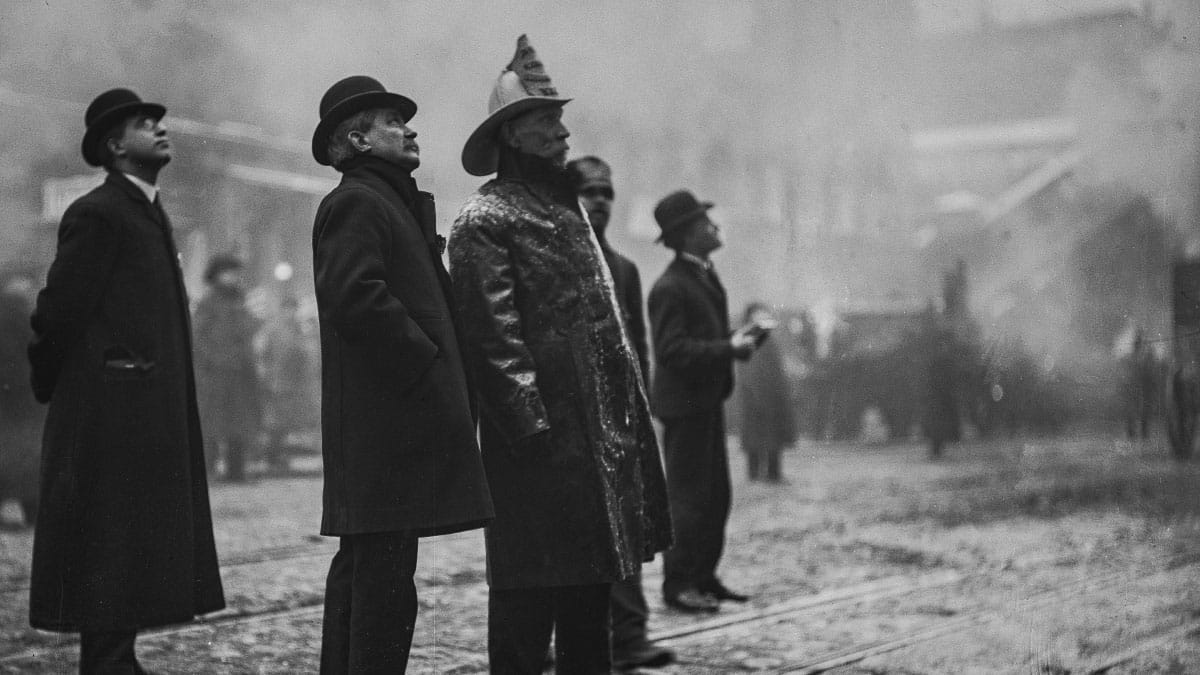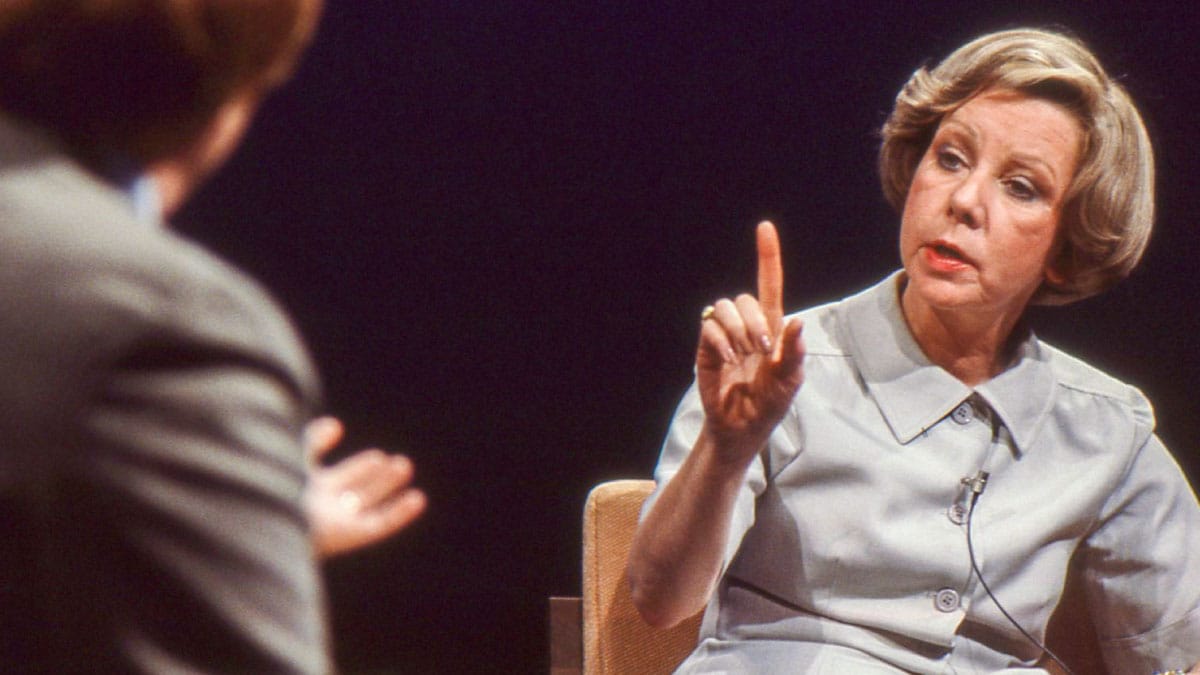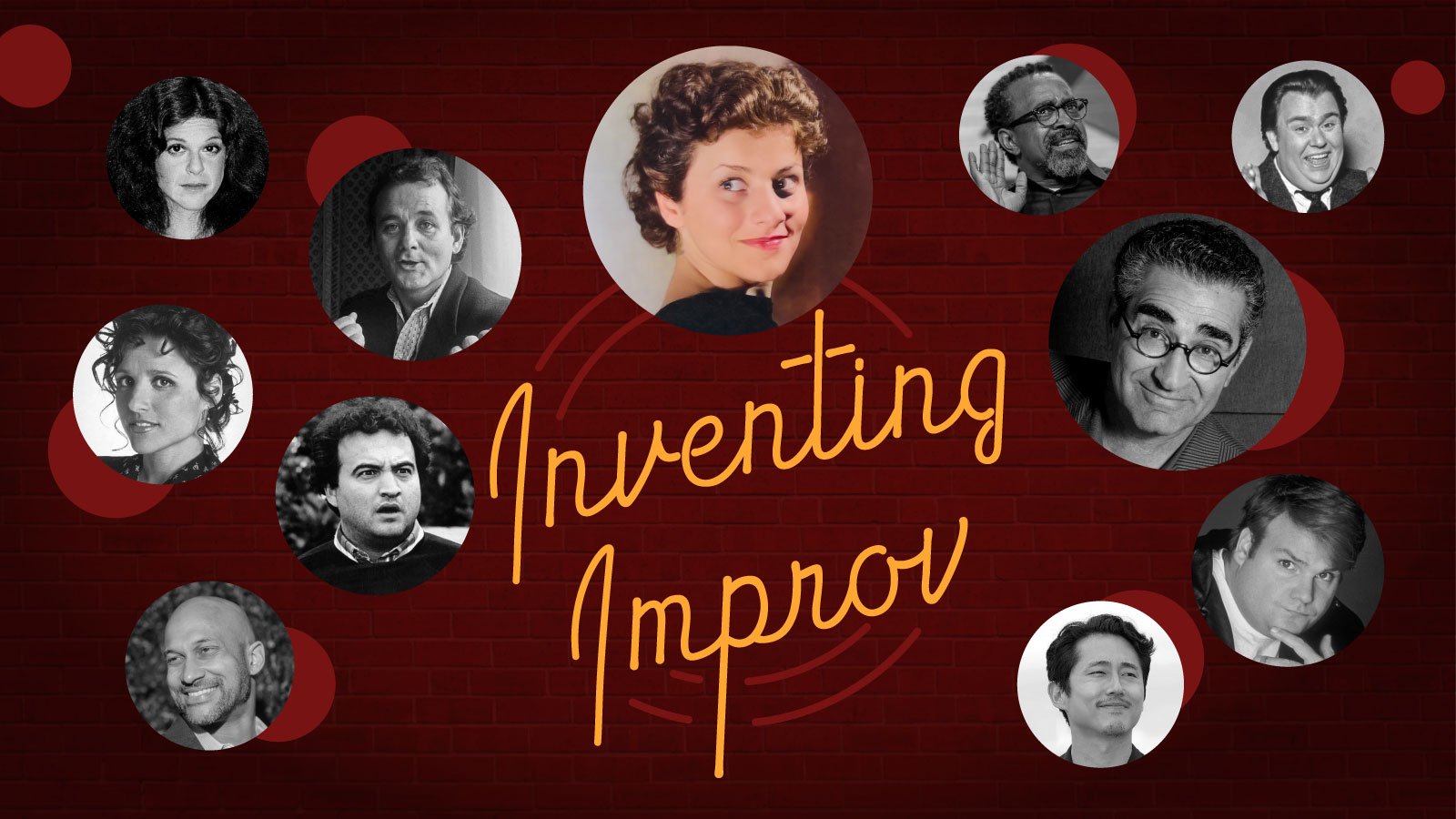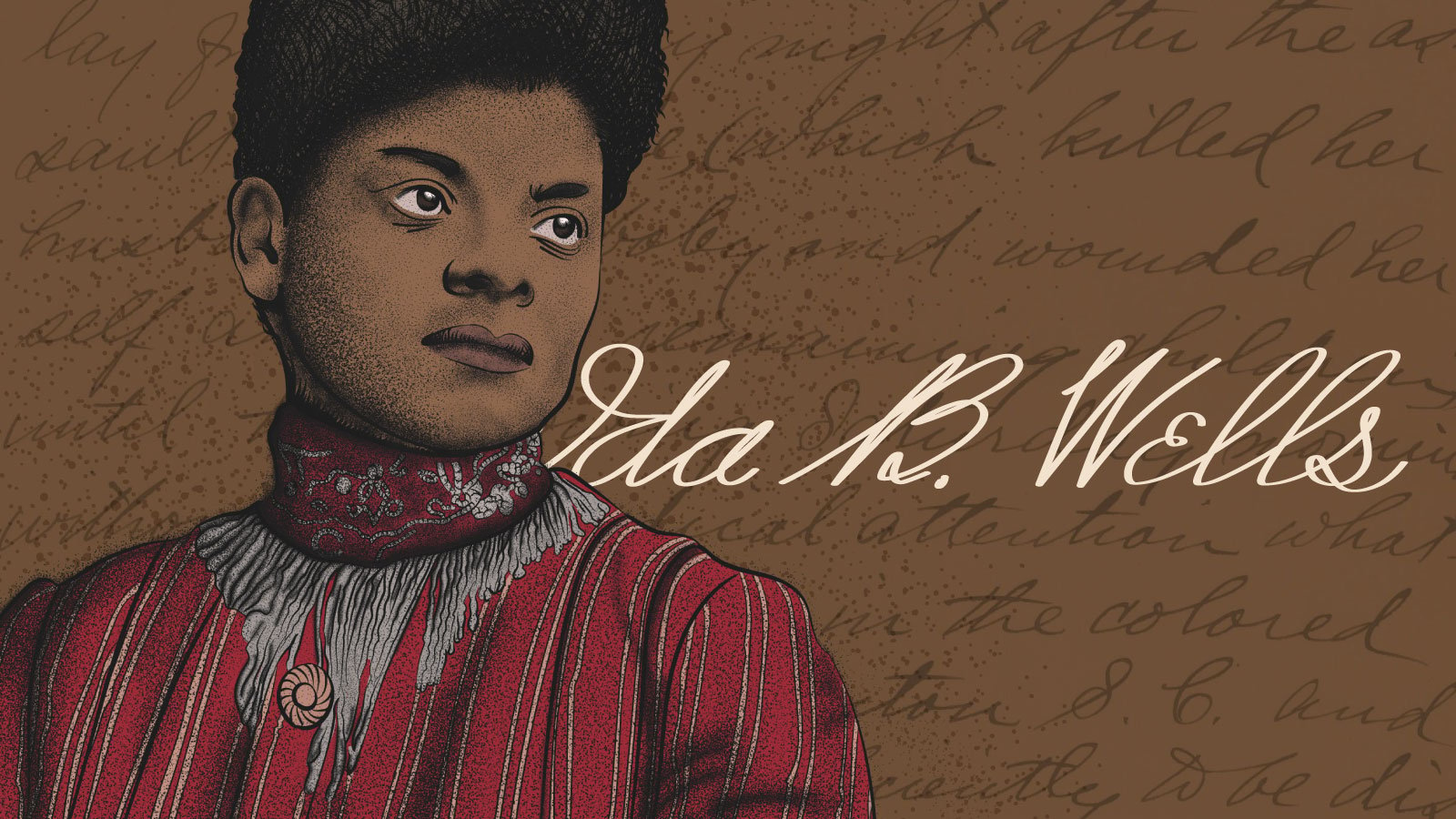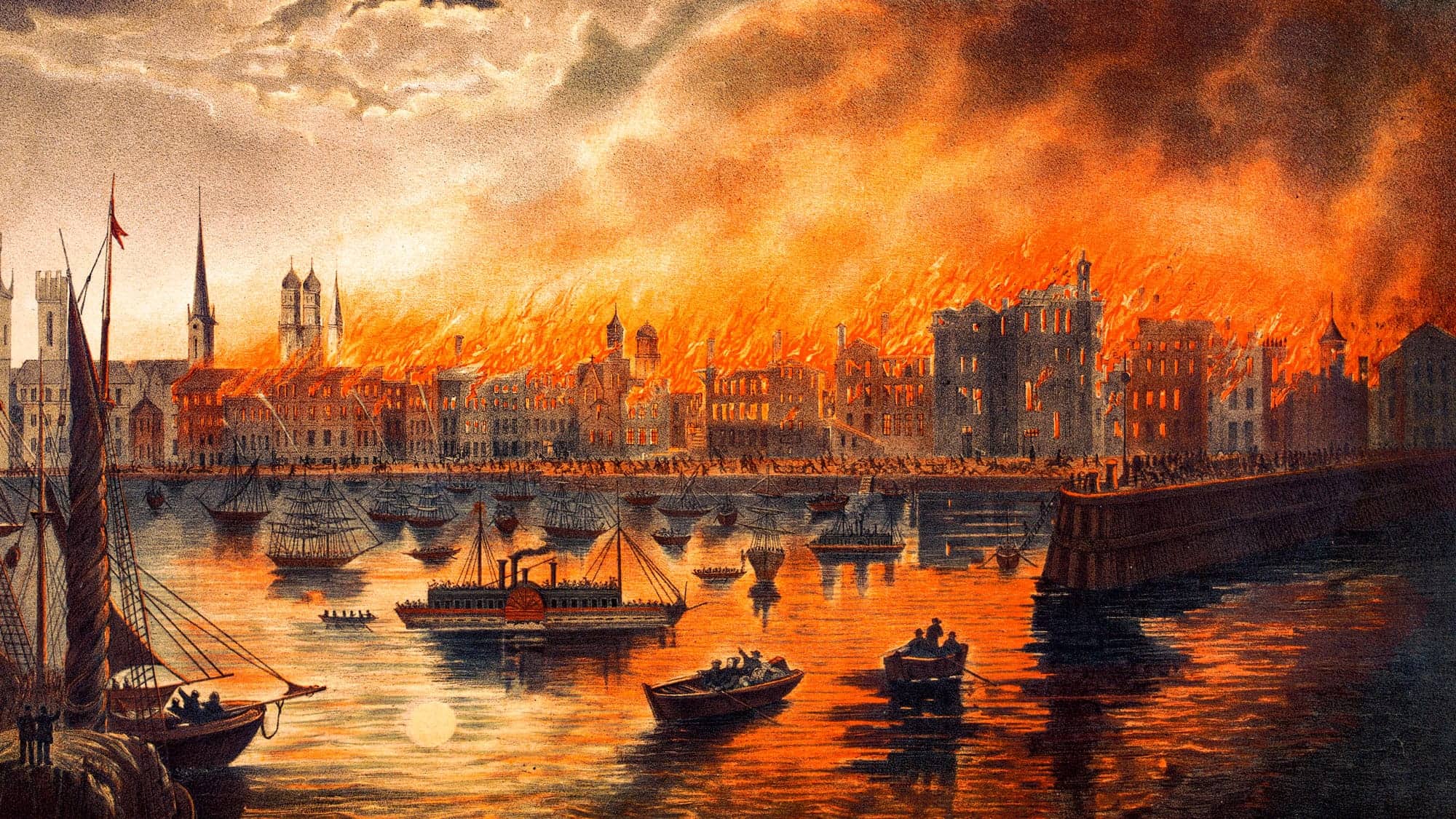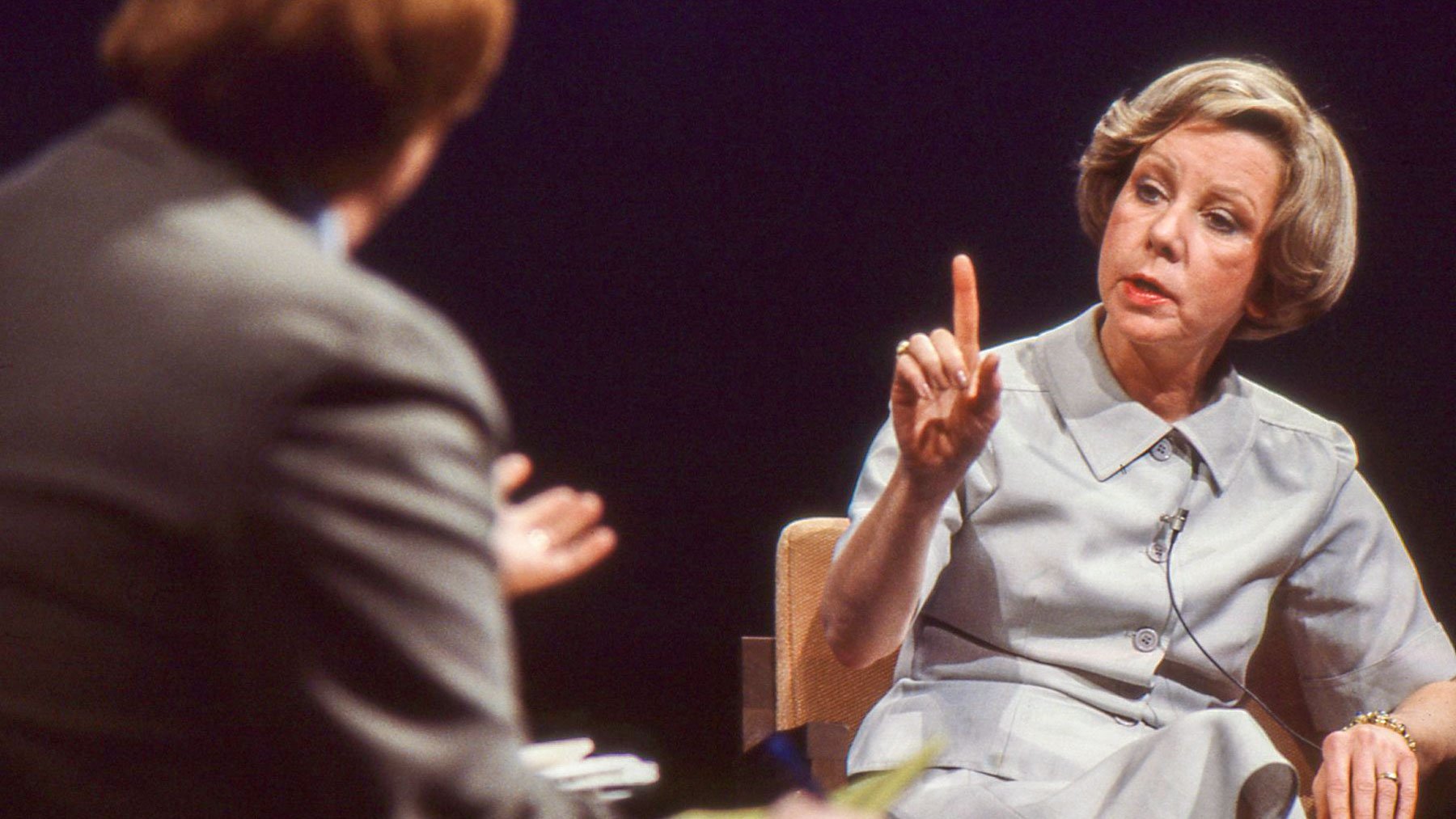Jane Byrne never intended to get into politics. But after her life was turned upside down by a tragic accident, she volunteered for John F. Kennedy’s presidential campaign and eventually caught the attention of the powerful boss of Chicago Democratic machine politics, Richard J. Daley. She became his protégée and held various positions, working her way up in city government. But after Daley’s death, Byrne called out corruption where she saw it, lost her job, and turned against the machine that shaped her. Her 1979 mayoral campaign as an anti-machine underdog appealed to many Chicagoans, including those in the city’s most marginalized communities. Though Byrne ultimately had a mixed record in office, her journey to get to the fifth-floor office of City Hall ended with her becoming not only Chicago’s first female mayor, but also the first woman to become mayor of a major U.S. city.
Jane Byrne Enters Politics
Born Jane Burke in 1933, Byrne grew up in Sauganash on the city’s North Side. In 1959, at the age of 25, Byrne became a widow and a single parent to her daughter, Kathy, after her husband died in a plane crash. William Byrne was a pilot in the Marines and was wrapping up a tour when he crashed while trying to land in fog.
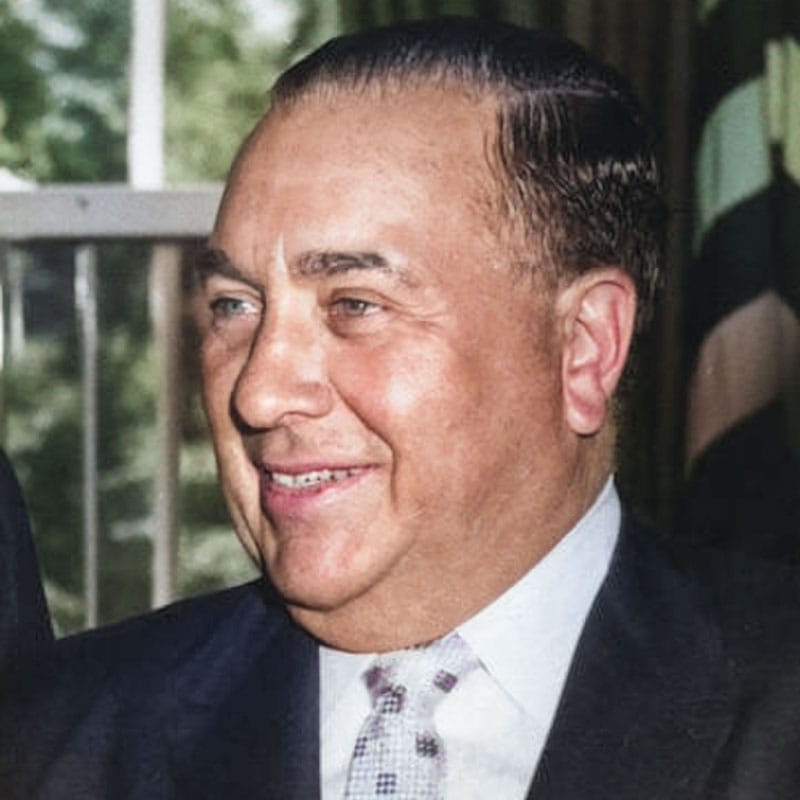
“It’s not that it turned her life upside down,” Kathy Byrne told Chicago Stories. “It’s that it pulled the floor out, and she didn’t know where she was going to land.”
In Jane Byrne’s 1992 book, My Chicago, she wrote about what her husband’s death meant for her and an infant Kathy. “I knew what I had to do. I had to be both mother and father and achieve a name for her,” she wrote.
At the encouragement of her family, Byrne took her sister Carol’s place as the secretary-treasurer of the Chicago office for John F. Kennedy’s 1960 presidential campaign. Through her work with the Kennedy campaign, Byrne often crossed paths with the city’s powerful boss of the Democratic “machine,” Mayor Richard J. Daley.
“Daley built an extraordinary political organization that was cobbled together by patronage and spoils,” political consultant David Axelrod, who was a reporter for the Chicago Tribune during Byrne’s tenure, told Chicago Stories. “Each ward had an allotment of jobs, and those city workers were faithful foot soldiers for the Democratic organization.”
Through the promise of jobs in exchange for votes, Daley maintained his political control. “The machine was basically a vote-gathering organization,” Don Rose, who would serve as campaign manager for Byrne’s first campaign, told Chicago Stories. “It stole votes, it forced votes, it bought votes and was very repressive and, in fact, racist.” People were faithful to – and also fearful of – Daley’s machine. As Mike Royko wrote in Boss, his 1971 book about Daley:
Nobody goes to work for the city…without Daley knowing it. He must see every name because the person becomes more than an employee: he joins the political Machine, part of the army numbering in the thousands who will help win elections. They damn well better, or they won’t keep their jobs.— Mike Royko, Boss: Richard J. Daley of Chicago
After seeing Byrne at local political events, Daley eventually asked to meet Byrne.
“‘Politics is like any big business. We are no different from General Motors,’” Byrne recalls Daley telling her. “‘Their product is cars. Our product is people. We sell candidates.’” Byrne was still hesitant to get involved when Daley told her to volunteer for her alderman. “‘I don’t even know if I want to be in politics,’ I answered weakly.”
But for Byrne, that was just the beginning. She volunteered for the Democratic Party and eventually got a job with the city’s Head Start program. In 1965, she was promoted to the Chicago Committee on Urban Opportunity. She was later appointed head of the city’s Consumer Affairs Department, and in 1975, Daley named her co-chair of the Cook County Democratic Central Committee. Byrne was the first woman in Daley’s cabinet and became his protégée.
“He had an almost filial pride in her and affection for her. She was very much one of his favorites,” Axelrod said.
Byrne Against the Machine
In 1976, Mayor Daley had a heart attack and died in office at the age of 74. According to the city’s line of succession, the president pro-tem of the City Council – a Black alderman named Wilson Frost – was supposed to step in as mayor. But Daley’s aides wouldn’t allow Frost to enter the office. The City Council did not approve him and instead appointed Michael Bilandic as the new mayor. Bilandic “was the most unlikely politician ever…a decent enough person, but hardly a people person,” according to Axelrod.
Bilandic removed Byrne as the co-chair of the Cook County Democratic Central Committee. Once a part of Daley’s inner circle, she now spoke out against the machine, calling a group of aldermen led by Ed Burke and Ed Vrydolyak an “evil cabal.” Bilandic fired her from her cabinet position after she publicly accused the mayor and other city officials of approving an illegal 12-percent taxi-fare increase in a backroom deal. Byrne was on her own.
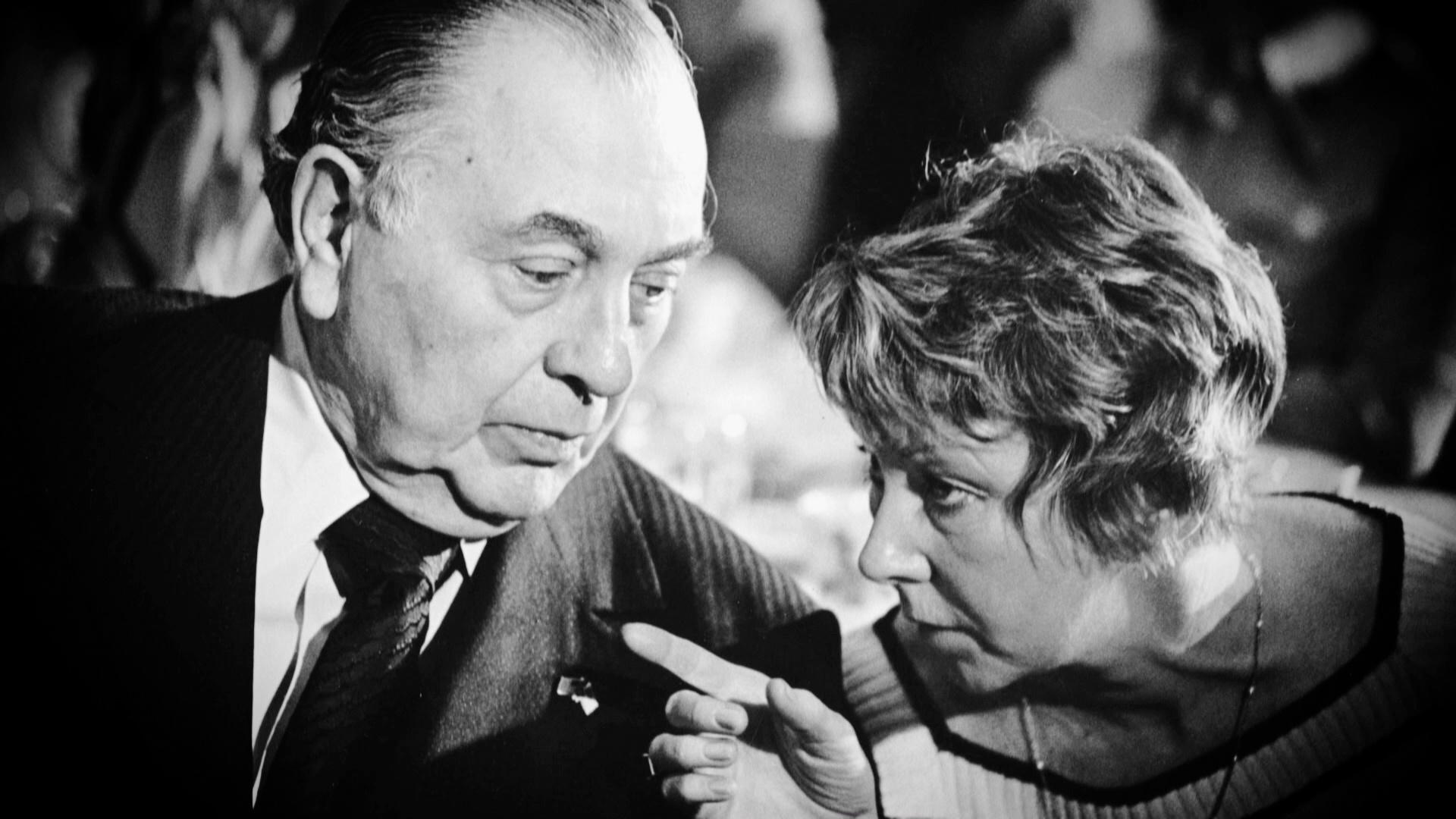
In August 1977, Jane Byrne announced her candidacy for mayor of Chicago, challenging Bilandic and the machine. “I think she just thought, you know, what the hell? You can’t fall off the floor, right?” Kathy Byrne told Chicago Stories.
Axelrod, who was a young reporter at the time, was assigned to her campaign, since it was assumed that it wouldn’t be successful.
“She was considered a hopeless underdog,” Axelrod said. “She was running as an anti-machine, reform, rebel candidate. And I thought it was interesting that she had spent her whole life in the Democratic organization, and she was running against it.”
At this point, Byrne was in a relationship with Jay McMullen, whom she would marry in 1978. A former City Hall reporter, McMullen was “very savvy and cynical” and helped advise her, according to Axelrod.
As the underdog, Byrne began assembling her campaign team, including a successful and reputable political strategist named Don Rose. “This was a campaign based on gut instincts rather than polling,” said Rose of the campaign, which was lacking in financial support early on.
Her main strength as a candidate was an ability to relate to the ordinary person, whether she was on the street or delivering a talk...There are people who can deliver a great speech, but aren’t necessarily good person-to-person and vice versa. She was good either way.— Don Rose
Rose said the key to their campaign was showing the “incompetence” of Bilandic’s administration, which was growing less popular with the electorate.
“I felt I could make Jane a very relatable character and back her up with the fact that she learned a lot from Mayor Daley,” Rose said. “I knew that I could sort of use Mayor Daley to defeat Mayor Daley.”
But it was the 1970s, and there still were few women in politics and certainly no women mayors of any major American cities. Rose said that, while campaigning, they avoided emphasizing Byrne as a reformer or woman so that they could take on Bilandic’s personality instead. They sometimes turned down endorsements from women’s organizations so it wouldn’t appear to be a feminist campaign. Rose asked Byrne, who wore various hairstyles at the time, to wear a wig to keep her look consistent and simple. Voters might not go for a woman who seemed to care too much about her appearance, but they didn’t want someone unkempt, either.
“That’s all part of the, not making her too much of a woman. That sounds terrible these days, but that was the Chicago of 1979,” Rose said. “I didn’t think Chicago was ready for a feminist, but they might take a nice lady.”
The Byrne campaign slogan was “One Chicago.” The goal was to create a campaign that would appeal to marginalized communities who wanted things to change.
“People were eager,” Elena Duarte, who ran the Latino initiative for the Byrne campaign, told Chicago Stories. “They were eager to break away from a system that recognized only certain people.”
Duarte said Latino voters in Chicago were facing challenges similar to those that many face now.
“You want jobs. You want to be treated like a human being. You want to be treated with respect. You want your children to have a good education, and you want to be able to have dignity. And I felt that at that point in time in Chicago, Latinos were just totally ignored,” Duarte said.
Policies that started under the Daley administration had also left Chicago’s Black communities behind. As whites fled for the suburbs, public housing complexes were built to segregate the Black community. In the neighborhoods, schools were overcrowded and jobs hard to come by.
“That was starting to fester. We had already had the season of riots starting with Dr. King, which raised a lot of consciousness,” Jacky Grimshaw, who would later work as precinct coordinator for Harold Washington, told Chicago Stories. “There was this break in terms of support for the Daley machine.”
That already dwindling support would further deteriorate as snow began to fall on Chicago in the winter of 1979.
A Snowstorm and Winds of Change
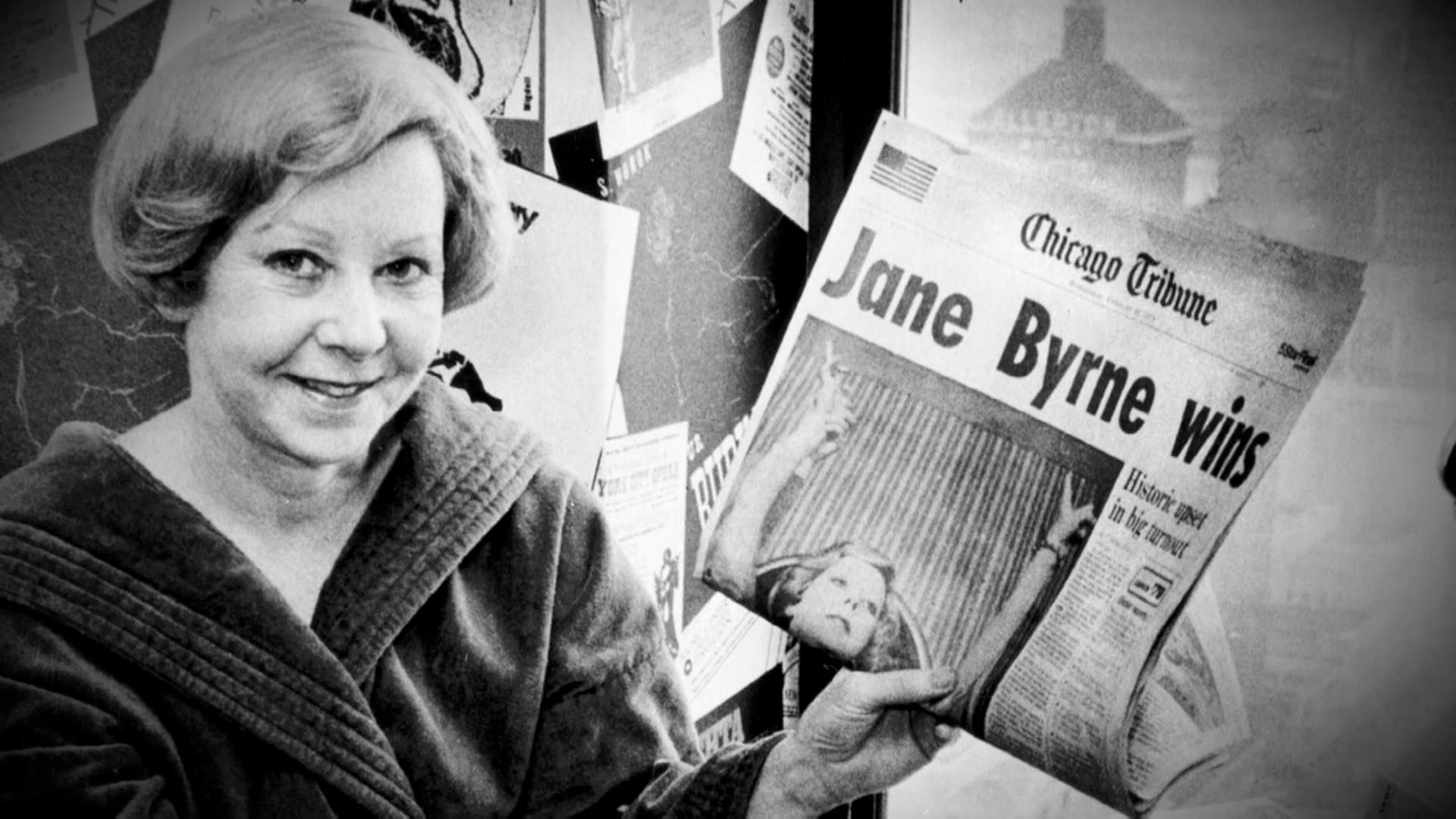
On January 13, 1979, a blizzard hit Chicago. In two days, 21 inches of snow fell on the city. Cars and buses couldn’t navigate the snowy streets that plows struggled to keep clear, and CTA trains were packed. To keep the system moving, Mayor Bilandic decided to run the trains express instead of making every stop, but by doing so, he left commuters in primarily Black neighborhoods stranded.
“Standing on the platform and trains are just going by,” Grimshaw said. “So what does that do? That makes you feel real good.”
The Byrne campaign used the transit chaos to its advantage, doubling down on their argument that Bilandic’s administration was incompetent.
“It was a campaign of opportunism that was taking place while the city was undergoing the torment of this terrible winter, and people were very upset,” Rose said.
With frustration mounting, public opinion was beginning to shift in Byrne’s favor.
I used to have people go down into the subway cars and ride for a little while and [go into] these packed cars and yell out, ‘It’s Bilandic that did this to you. Let’s get rid of him!’ and stuff like that, and [then they would] get off the car and wait for the next train – all kinds of little nasty tricks.— Don Rose
Snow was still on the ground nearly two months later as the February 27 primary approached. The machine’s confidence was rattled.
“The night before the primary I knew that the [Democratic] organization was worried,” Axelrod said. “The reason I knew is because the day before the election, [they] switched polling places in maybe 170 precincts, all of which were in places where Jane Byrne was likely to do well.”
Rose said that, while he wasn’t expecting a victory, he thought they were at least going to get more votes than any other non-machine candidate had ever gotten. He was right. On the afternoon of primary day, the Byrne campaign started to get optimistic exit polls. The race was ultimately called: Byrne won 51 percent of the vote, topping Bilandic. She won two-thirds of majority-Black wards, too.
The Byrne campaign cruised on to the general election. On April 3, Byrne defeated Republican Wallace Johnson with 82 percent of the vote. She was the first woman to become mayor of a major U.S. city.
“She lost only two out of some 3,000 precincts,” Rose said. “That's overwhelming. Nobody has ever won that much – not even Mayor Daley.”
Mayor Jane Byrne
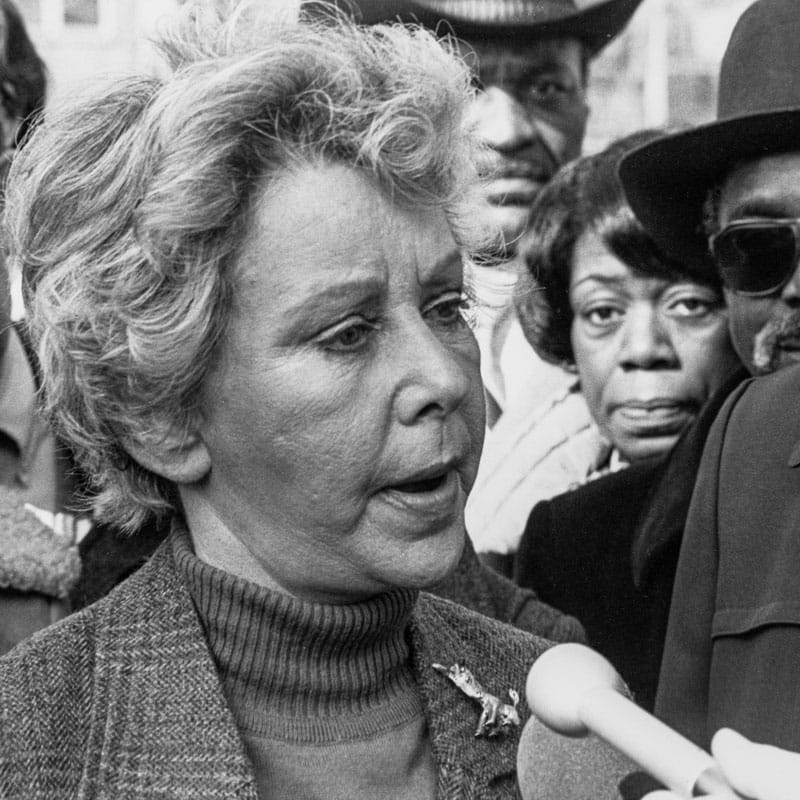
Byrne was sworn in on April 16, 1979. In her one term in office, Byrne brought lasting change to Chicago, such as growing the film industry in the city and bringing more arts and culture to Chicagoans in the form of citywide and neighborhood festivals such as Jazz Fest and Taste of Chicago. She also was the first Chicago mayor to recognize a Gay Pride Parade Day.
But Byrne had inherited a city in financial distress, and some of the people to whom she had promised change were disappointed.
“The tragedy of Jane Byrne is that she didn’t govern as she ran,” Axelrod said. “She did not deliver on the great promise of that campaign.”
“Jane became a totally different personality once she won,” Rose said.
Despite her anti-machine campaign rhetoric, Byrne ended up allying herself with powerful machine aldermen, including Ed Burke and Ed Vrdolyak – the same men she had once said were part of an “evil cabal.” Many of the promises she had made to communities of color went unfulfilled.
“When we went to different locations where it was mainly Spanish-speaking people, I would be translating for her and she would be telling me, ‘Yes, we're going to make sure that you have good schools, that you have jobs, and I'm going to do this for you.’ Did she do it? Not necessarily,” Duarte said.
Though she appointed Ruth Love as the city’s first Black and female school superintendent, Byrne drew criticism for appointing white people to replace board members for the Chicago Housing Authority and the Board of Education.
“Black folks felt that they had elected this woman, and she was totally turning her back on them,” Grimshaw said. “To her credit, she never said, ‘Well, I’m going to do this for the Black community.’ But on the other hand, she didn’t say she was going to be business as usual, either.”
In 1981, Byrne moved into the Cabrini-Green public housing complex to bring attention to the violence there. It was a controversial move, with some praising it and others calling it a publicity stunt, which ultimately lost her support among many Black voters. She also faced a teachers’ strike, a CTA strike, and a strike by city firefighters.
In 1983, Harold Washington defeated Byrne in a crowded primary and went on to be elected the first Black mayor of Chicago. Still, Axelrod said, it was a great accomplishment for Byrne to ever be elected mayor.
“She was part of a period of rapid and significant change in the city – first woman mayor, who gave way to the first Black mayor.” Axelrod said. “That’s part of history that nobody can take away from her."

